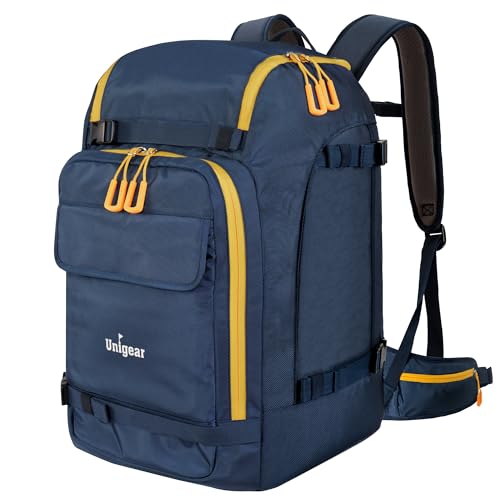Consider donating or repurposing your old gear instead of discarding it. Many shelters and charities welcome gently used items, providing practical support to those in need while reducing waste.
Assess the materials of your equipment. High-quality products made from durable components can often be repaired rather than thrown away, extending their lifecycle and minimizing environmental impact. A quick stitch or patch may be all that’s needed.
Engage in local collection events where items can be recycled. Some manufacturers and retailers have take-back programs, ensuring that old gear is processed responsibly rather than ending up in a dump.
Before buying new items, research brands committed to sustainable practices. Many companies now produce eco-friendly options designed to lessen their footprint, incorporating materials that can be recycled after use.
Is Your Baggage a Disposable Item or Sustainable Resource?
Prioritize donating or repurposing your used baggage instead of disposing of it. Organizations such as Goodwill or local charities often accept functional items, allowing them a second life while benefiting those in need.
Consider upcycling old suitcases into unique furniture or storage solutions for your home. With a little creativity, an outdated bag can serve decorative purposes, transforming into a stylish ottoman or a quirky pet bed.
Material Matters
Assess the materials used in your item. Hard-shell variations often consist of polycarbonate or ABS, while soft-sided types are usually crafted from nylon or polyester. Research the best disposal methods for these materials; some may be recyclable in certain regions, while others require specialized processing.
Repair Before Replace
Explore repair options if your item is damaged. Many local shops specialize in mending zippers, handles, or other components, extending the lifespan significantly. Online tutorials can guide you through simple repairs at home, saving both money and resources.
Identifying Materials in Travel Bags
Analyze the components of your bags to determine their disposal options. Common materials include polyester, nylon, and polycarbonate. Look for tags specifying fabric types, often found inside pockets.
Examine zippers, buckles, and wheels. Metals such as aluminum and steel are recyclable, while plastic components vary by type. Identifying recycling codes on plastics can help you understand their fate.
For softer cases, check for EVA foam or rubber, both of which may present unique disposal challenges. Many brands have adopt sustainable practices; research the manufacturer’s policies on repurposing or recycling their products.
Consider accessories as well. Products like the best collapsable large umbrella can often be disassembled for easier recycling. Keep an eye out for recyclable packaging that may accompany your purchases.
Always separate materials where possible, as mixed components can complicate processing at recycle facilities. Your informed decisions can significantly impact the environment when it comes time to dispose of your bags.
Understanding Luggage Lifecycle and Disposal Options
To minimize waste, consider the following disposal strategies for old gear:
- Repurposing: Transform suitcases into unique furniture items, such as benches or storage containers.
- Donation: Offer usable items to charities or organizations that assist individuals in need. Check local shelters or thrift stores.
- Trade-in Programs: Some brands provide incentives for returning old items in exchange for discounts on new products.
- Upcycling: Use materials from worn-out bags to create new accessories or crafts.
- Recycling Centers: Research local facilities that accept specific materials found in bags, such as plastics and metals.
Understanding container types can enhance disposal decisions:
- Hard-shell Cases: Often contain durable plastic, suitable for specialized recycling streams.
- Soft-sided Bags: Typically made from fabric blends, may require different handling methods, such as textile recycling.
Before disposal:
- Inspect the condition: Items in good shape should be repurposed or donated.
- Remove personal items and attachments before discarding.
- Check local regulations regarding disposal to limit environmental impact.
By actively participating in responsible disposal methods, consumers can contribute to reducing waste associated with baggage while encouraging sustainable practices within the industry.
Recycling Programs for Travel Accessories
Consider participating in manufacturers’ take-back initiatives, which allow you to return old products directly to the brand. Many companies, especially those focused on sustainability, have established programs designed to repurpose or recycle components from their offerings.
Local Collection Centers
Investigate local collection centers for durable goods, where you can drop off items that may not be suitable for curbside pickup. These facilities often accept various materials, ensuring that your old items are handled responsibly.
Donation Opportunities
Explore nearby organizations, including charities and shelters, that may value gently used bags. Donating extends the lifecycle of these items and supports community needs. Search for local non-profits that specifically seek carryalls or faux leather options.
Lastly, consider refashioning older pieces into something new. Some organizations specialize in upcycling accessories into new forms, enhancing both creativity and sustainability. For inspiration, check out projects that merge functionality and artistry.
For those interested in adding to their eco-friendly practices, exploring products like the best battery power pressure washer can help minimize waste while keeping your environment tidy.
Practical Steps for Responsible Luggage Disposal
Begin with an assessment of the condition of your gear. If intact, consider donating to local charities or shelters that can utilize durable items in their programs. Many organizations accept gently used bags and cases.
For items showing significant wear, investigate repair options. Local cobblers or specialty shops might extend the life of zippers, wheels, or fabric. This not only saves money but also reduces waste.
Next, sort materials for separate disposal. Identify and segregate components like plastic, fabric, and metal. Each material may have specific instructions for proper handling based on local waste management practices.
Participate in dedicated collection events. Many municipalities host regular drives for large-scale materials, including textiles and plastics, ensuring environmentally responsible processing.
Research brands that offer take-back programs. Some manufacturers provide incentives to return old products for recycling, thus closing the product lifecycle loop.
Lastly, always consult local regulations regarding disposal. Different areas have their guidelines, and adherence to these ensures compliance and environmental stewardship.








